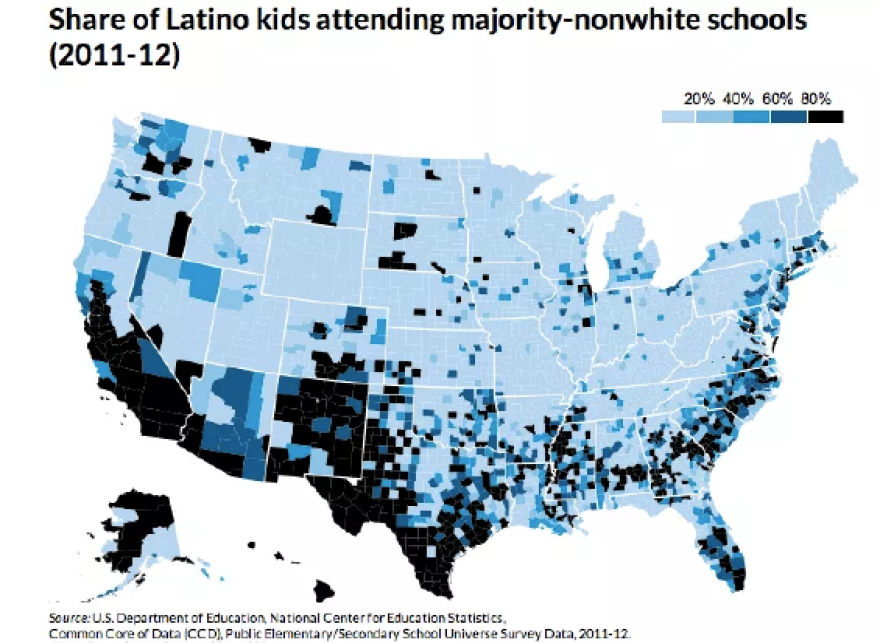Today marks 62 years since the landmark Supreme Court decision of Brown v. Board of Education. The Court ruled that "separate but equal" public schools for black students and white students were unconstitutional.
The case inspired education reform everywhere, and formed the legal means of challenging segregation in all areas of society.
But since Brown, many schools have resegregated. And some never desegregated at all.
Last week, a federal judge ordered a school district in Cleveland, Mississippi to integrate its middle and high schools, after a legal battle that has spanned decades.
The Cleveland School District, located in a town of just over 12,000, is divided by railroad tracks. On one side of the tracks, you'll find mostly black families. The other side is largely white.
And the district's secondary schools mirror that separation. There is one all-black middle school, and one all-black high school. Just over a mile away are a historically white middle school and high school.
The order was written by Judge Debra M. Brown for the U.S. District Court for the Northern District of Mississippi. Now, the city has to consolidate its schools and all students will attend one middle school and one high school.
According to The Washington Post, Brown writes:
The delay in desegregation has deprived generations of students of the constitutionally guaranteed right of an integrated education. Although no court order can right these wrongs, it is the duty of the district to ensure that not one more student suffers under this burden.
District officials argued the order would trigger "white flight," making integration harder, according to The Post. The Cleveland School District released a statement on its website:
United States District Court Judge Debra Brown on Friday, May 13, 2016, adopted the Department of Justice's plan to consolidate middle and high schools in the Cleveland School District, which will result in one high school at Cleveland High School and one middle school at East Side High. The Board believes the plans it proposed to the Court, either (1) open enrollment or (2) a combined middle school with two racially balanced high schools, were constitutional and in the best interest of students, parents and the community as the District's plans allowed for students and parents choice. The Board is examining the 96-page opinion of the Court and considering its options for appeal. The Court did not provide a time line for implementation of any changes. If the Board appeals, it would request that the existing open enrollment plan continue while the appeal is pending.
But what's going on in Cleveland is not exactly rare. Many of America's public schools remain sharply segregated, with many students separated by race or class. And unsurprisingly, research suggests segregated schooling adversely affects students. One study found black students in segregated schools tended to perform worse than their black counterparts in more integrated schools.
Edward Duvall is a black parent of two children in the district’s public schools. According to The Post, he says he favored consolidation in part because it would save money, leaving more funds for classrooms and programs.
But according to court documents, that wasn’t the only reason. “We can break down this wall of racism that divides us and keeps us separated,” he said. “And we could create a new culture in our school system that’s going to unite us and unite our whole city.”
You can check out three maps that show U.S. school segregation below:






